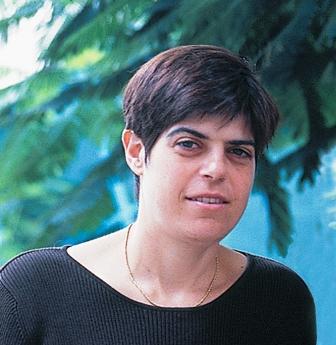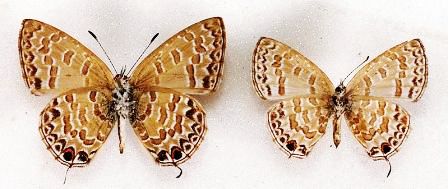The wing of a fly is a marvelous piece of work; its unique properties rely, in part, on an intricate network of structural veins. If we compare a small fly wing to a large one, exactly the same pattern of veins – scaled to fit – appears. How does this happen? For that matter, how do humans and animals grow limbs just the right size for their bodies? How do developing embryos keep everything in proportion as they grow?

These questions are ones of scaling – how patterns stay in sync with size as an embryo or organism grows and develops. Institute scientists Profs.
Naama Barkai and
Ben-Zion Shilo and research student Danny Ben-Zvi of the Molecular Genetics Department have now shown how scaling works in fruit fly wings, and their findings should be applicable to many different examples of development.
These researchers drew their inspiration from a famous experiment performed in the 1920s by German scientist Hans Spemann, in which he grafted cells from the future head of one frog embryo onto the flank of a second embryo. The resulting tadpole was a “Siamese twin” with two perfectly formed – but half-sized – heads. This finding implied that, rather than proceeding according to a pre-set “plan,” development takes place through cells sending messages to one another, directing them down certain developmental paths. In the intervening years, it has been found that the control mechanism for patterning relies on one such message – a substance called a morphogen. Morphogens are secreted by a small number of cells in the center of the developing embryo, and from there, they diffuse outward. As this substance disperses, its levels drop off in the cells farther from the center, and thus the morphogen concentration relays a signal to the developing cell about its place and function in the growing organism.

But the Institute researchers knew this was not the whole story: A morphogen diffuses from the center at the same rate in a small organism as in a larger one and thus would not effect scaling on its own. Several years ago, they
recreated Spemann’s frog embryo experiment, but they looked for a second signal – one that could bring size into the picture. Indeed, they found a molecule that is synthesized at the edges – one that also diffuses away from its site of origin. The second molecule functions as a morphogen, and it is the redistribution of this molecule that finally determines the morphogen signal each developing cell receives, in a way that also takes embryo size into consideration.
Next, they asked: Do all complex organisms use a similar scaling method? To explore this question, Barkai and Ben-Zvi first created a theoretical model in which a molecule on the growing edge – called an expander molecule – aids in the distribution of the morphogen. The morphogen is referred to in the model as a repression molecule because it also shuts down the synthesis of the expander molecule at the edge. The model suggests just how this interplay between expansion created at the edge and repression moving from the center results in a pattern built to scale.
In the new study, which appeared in
Current Biology, Ben-Zvi, Barkai and Shilo have brought the theoretical model back into the lab, carrying out experiments on the development of wings in fruit fly larvae. These larvae don’t actually have wings; nevertheless, wing patterning is already taking place in small structures called wing discs, and their development can easily be traced. The researchers knew that a morphogen called Dpp was active in the wing disks, and they suspected that a protein called “Pentagone,” acted as an expander molecule, as it had recently been shown to play a role in the development of wing vein networks.
The scientists collected fruit fly larvae of varying size and, using a quantitative method they developed, checked the distribution of morphogen concentrations. They then eliminated Pentagone from the developing wing and checked again. Their findings showed that the wings in the unaltered fruit flies revealed the morphogen scaling activity predicted in the model, its signals being proportionate to wing size. In contrast, in the flies without Pentagone the morphogen was distributed in the same way in all the wings, regardless of their relative sizes. They were thus able to show that Pentagone is, indeed, an expansion molecule and that the expansion-repression paradigm they had formulated can be applied to such differing organisms as frogs and fruit flies.
Shilo: “Frog embryos and fly wings in larvae develop through completely different molecular mechanisms, yet they apparently follow the same general scaling model. The beauty of this research lies in the way it seamlessly weaves a theoretical model into experimental biology. This gives us a fresh approach to investigating scaling, an approach in which, rather than getting bogged down in a search for complex molecular mechanisms, we can begin by looking for this relatively simple and universal paradigm.”
Prof. Naama Barkai’s research is supported by the Helen and Martin Kimmel Award for Innovative Investigation; the Jeanne and Joseph Nissim Foundation for Life Sciences Research; the Carolito Stiftung; Lorna Greenberg Scherzer, Canada; the Minna James Heineman Stiftung; and the European Research Council. Prof. Barkai is the incumbent of the Lorna Greenberg Scherzer Professorial Chair.
Prof. Ben-Zion Shilo’s research is supported by the Jeanne and Joseph Nissim Foundation for Life Sciences Research; the Dr. Josef Cohn Minerva Center for Biomembrane Research; the Carolito Stiftung; la Fondation Raphael et Regina Levy; the estate of Georg Galai; and the Mary Ralph Designated Philanthropic Fund. Prof. Shilo is the incumbent of the Hilda and Cecil Lewis Professorial Chair of Molecular Genetics.


